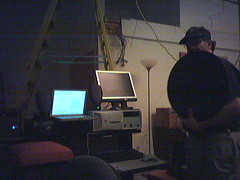Innovation sometimes springs from crisis: a company sees a dire threat and takes drastic steps to recover. But what if one person perceives this threat before it becomes obvious to the organization? Can this person manufacturer crisis to initiate change?
It seems that’s what Thomas Friedman is doing with his book The World is Flat, changing the conversation about offshoring to one about fixing our national innovation capabilities…
And it is our ability to constantly innovate new products, services and companies that has been the source of America’s horn of plenty and steadily widening middle class for the last two centuries. This quiet crisis is a product of three gaps now plaguing American society. The first is an ”ambition gap.” Compared with the young, energetic Indians and Chinese, too many Americans have gotten too lazy… Second, we have a serious numbers gap building. We are not producing enough engineers and scientists… And finally we are developing an education gap. Here is the dirty little secret that no C.E.O. wants to tell you: they are not just outsourcing to save on salary. They are doing it because they can often get better-skilled and more productive people than their American workers.

